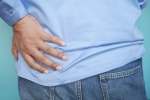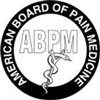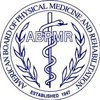Home » Blog
| Stem Cell, PRP, Acupuncture in Queens & Long Island, New York
Blog | Stem Cell, PRP, Acupuncture in Queens & Long Island, New York
Understanding Back Pain in Pregnancy - Eighty percent of women will experience back pain at some point during their pregnancies. The severity can range from mild discomfort after standing for long periods to debilitating pain that disrupts daily life. Although back pain during pregnancy can sometimes indicate a more serious condition, such as the onset of labor, it is usually the result of natural bodily changes.
Read more
It might seem counterintuitive, but a damaged or diseased disc doesn't always cause pain or any symptoms at all. A significant portion of people over 40 have some form of disc problem visible on an MRI scan, yet many of them experience no symptoms. This situation is similar to other conditions like heart murmurs, which often have no symptoms.
Read more
The spinal disc serves as a robust and elastic pivot for each spinal joint, offering stability while enabling a wide range of motion in the lower back and neck. However, when a disc begins to lose its strength and flexibility, it can lead to various painful and potentially disabling symptoms. This article simplifies the complex topic of spinal disc problems, highlighting the most crucial aspects.
Read more
Even though rigid bracing has been the standard nonsurgical treatment for scoliosis for decades, there remains some debate over its effectiveness. Some medical professionals argue that rigid bracing is no more effective than observation or alternative therapies like soft braces or exercises. Below is an explanation of why current evidence supports rigid bracing as the most effective nonsurgical method for preventing scoliosis curve progression.
Read more
Several rigid back braces are available today for scoliosis treatment, each differing in how they apply pressure to the spine and ribs to prevent curve progression. Some braces require full-time wear (16 to 23 hours a day), while others are only worn at night for 8 to 10 hours during sleep.
Read more
The ideal time to address a progressing idiopathic scoliosis curve is typically before the adolescent growth spurt, a period when the curve is likely to worsen rapidly. Current medical guidelines often recommend using a rigid back brace during this critical phase to reduce the risk of severe spinal deformity.
Read more
Platelet-rich plasma (PRP) therapy is a cutting-edge medical treatment that harnesses the body's natural healing mechanisms to promote tissue repair and regeneration. PRP has gained widespread recognition for its efficacy in treating various musculoskeletal conditions, offering patients a non-surgical alternative for pain relief and improved function.
Read more
Spinal conditions often come with difficult symptoms like chronic pain. Interventional pain management physicians use various medical approaches to address your spinal condition and related symptoms. This includes platelet-rich plasma (PRP) therapy for many of our patients. PRP treatment is a type of regenerative medicine based on a sample of your blood. With centrifuge technology, your provider concentrates the parts of your blood that trigger healing and new growth, which can then be returned to a treatment area around your spine.
Read more
Patellar tendinopathy (PT) is “jumper’s knee,” a clinical and chronic overuse condition of unknown pathogenesis and etiology. A large proportion of patients are refractory to conservative treatment, and a variety of new therapies have emerged, including PRP injections. PRP-containing growth factors have been shown to play a role in tendon healing.
Read more
Low back pain (LBP) involves a spectrum of different types of pain (e.g., nociceptive, neuropathic, neoplastic, and nonspecific) that frequently overlap. LBP can be caused by lumbar spine elements (e.g., soft tissue, vertebrae, zygapophyseal and sacroiliac joints, intervertebral discs, and neurovascular structures). Therapy for LBP usually begins with self-care and medication in combination with non-pharmacological methods, such as physical therapy and psychological treatment, in appropriate patients.
Read more
Love this Post? Spread the World






















